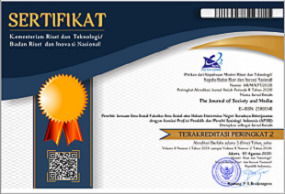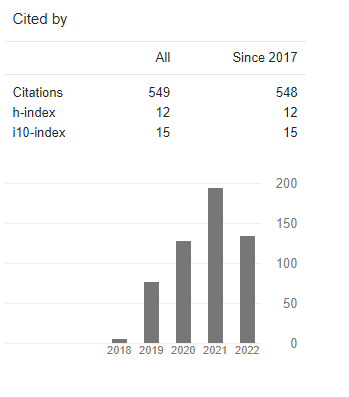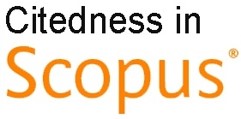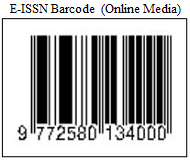Sexual Self-Disclosure: A Study on Communication Behaviors among Users in Online Dating Applications
DOI:
https://doi.org/10.26740/jsm.v6n1.p84-103Abstract
The development of digital technology has changed the way people communicate. The existence of online media is no longer a medium of information but also has become a space for human interpersonal relationships. One of the phenomena is the shifted pattern of a group of people looking for a life partner virtually through dating applications. This emerging trend of online dating applications in the vast digital world has been contradicted with the values of the Eastern community including Indonesia. The communication pattern employed by the users, despite it being considered taboo to some extent, includes the sexual self-disclosure by users to targeted partners in the online dating apps. The study aims at understanding the process of communication of sexual self-exposure by the users in the online dating application. Additionally, this study examines how sexual behaviors as the implication of online interactions. There are some dynamics employed in sexual self-disclosure in the process of online communication, factors that influence the way to communicate in the online dating apps, including occupation, recent events, and sexual experiences
References
Altman, I., Taylor, D.A. 1973. Social Penetration : The Development Of Interpersonal Relationship. Holt, Rinehart & Winston.
A.M, Morissan. 2010. Periklanan Komunikasi Pemasaran Terpadu. Jakarta : Penerbit Kencana.
Bungin, Burhan. 2006. Sosiologi Komunikasi Teori, Paradigma, dan Diskursus Teknologi Komunikasi di Masyarakat. Jakarta: Kencana Prenada Media Group
Byers, E. Sandra., Demmons. Stephanie., Lawrance. Kohli-An. 1998. Sexual Satisfaction Within Dating Relationship : A Test Of The Interpersonal Exchange Model Of Sexual Satisfaction. DOI: 10.1177/0265407598152008
Krasnova, Hanna., Gunther. Oliver., Spiekermann. Sarah., Koroleva. Ksenia. 2009. Privacy Concerns And Identity In Online Social Networks. DOI: 10.1007/s12394-009-0019-1
Danescu-Niculescu-Mizil, Cristian; Gamon, Michael; Dumais, Susan. 2011. Mark my words! Linguistic style accommodation in social media. doi:10.1145/1963405.1963509
Forkner, K.A. (2013). And Do You Take This Stranger To Be Your Lawfully Wedded Wife?: The Usefulness of Social Penetration Theory within Premarital Counseling.
Hamman. 1996. Cyberorgasms. Cybersex Amongst Multiple-Selves and Cyborgs in the Narrow-Bandwidth Space of America Online Chat Room. University of Essex.
Hine, Christine. 2015. Ethnography For The Internet: Embedded, Embodied and Everyday, Bloomsbury: London
Hullman, G.A., Weigel, D.J., & Brown, R.D. (2022). How Conversational Goals Predict Sexual Self-Disclosure Decisions. Journal of sex research, 1-13. DOI:10.1080/00224499.2022.2035310
Kane, C.L., & Maguire, K.C. (2009). Nonverbal Displays of Self-Presentation and Sex Differences in Profile Photographs on MySpace.com. National Communication Association, Chicago, IL.
Krasnova, Hanna, Gunther, Oliver, Spiekermann, Sarah, Koroleva, Ksenia. 2009. Privacy Concerns and Identity in Online Social Networks. Identity Journal Limited, 39-63.
Lipson. 1994. Ethical Issues in Ethnography. Thousand Oaks: Sage Publications.
M. A. . Halliday, Language as Social Semiotic: The Social Interpretation of Language and Meaning, L. London: Edward Arnold, 1978.
Mustajoki, A. (2010). Types of non-standard communication encounters with special reference to Russian.
Oriza, I.I., & Hanipraja, M.A. (2020). Sexting and Sexual Satisfaction on Young Adults in Romantic Relationship. DOI:10.7454/proust.v3i1.61
Pennington, N. (2015). Building and Maintaining Relationships in the Digital Age: Using Social Penetration Theory to Explore Communication through Social Networking Sites.
Pilliang, Yasraf. A. 2004. Posrealitas-Realitas Kebudayaan dalam Era Posmetafisika. Yogyakarta: Jalasutra
R. and J. W. Webber. 2012. Social Media and Help Seeking by Young People on Sexual Assault. Fitzroy
Shedletsky, Leonard., Aitken. Joan E. 2004. Human Communication On The Internet. Pearson.
Stenberg, R.J. 1986. A Triangular Theory Of Love. Psychological Review, 93(2), 119-135. DOI: 10.1037/0033-295X.93.2.119
Tang, Nu., Bensman. Lisamarie., Hatfield.E. 2013. Culture And Sexual Self Disclosure In Intimate Relationships. DOI: 10.5964/IJPR.V712.141
Tengah, J. (2019). Selective Self-Presentation Through Video-Mediated Communication: A Study of Hyperpersonal Communication. MediaTor, Vol 12 (1), Juni 2019, 102-112.
Walther, Joseph B. (1992). Interpersonal effects in computer-mediated interaction: A relational perspective.. Communication Research 19 (1): 52-90.
West, Richard., Turner. Lynn H. 2014. Introduction Of Communication Theory: Analysis and Application. McGraw Hill.
Yang, M.L., & Chiou, W.B. 2010. Looking Online For The Best Romantic Partner Reduces Decision Quality: The Moderating Role of Choice-Making Strategies. Cyberpsychology, Behaviour, and Social Networking. DOI: 10.1089/cyber.2009.0208
Downloads
Published
How to Cite
Issue
Section
License
Copyright (c) 2022 The Journal of Society and Media

This work is licensed under a Creative Commons Attribution 4.0 International License.
 Abstract views: 1576
,
Abstract views: 1576
, PDF Downloads: 840
PDF Downloads: 840












